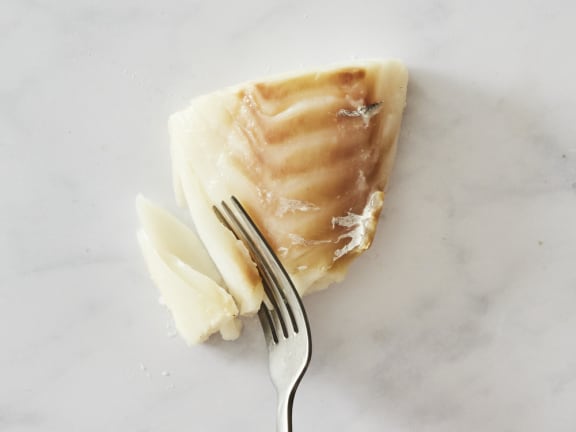Wild Alaska Pollock and Pacific cod are two popular varieties of Alaskan white fish that are perfectly suited for everyday seafood meals. Both are mild in flavor and firm enough to prepare using a range of cooking methods, making them excellent choices for everything from baked dishes to fish & chips to homemade fish sticks. They’re also adaptable to different sauces, marinades, and spice rubs.
Since both Wild Alaska Pollock and Pacific cod are in the cod family, they have so much in common that you might wonder which one to prepare for your next meal. Here are some of the differences between the two to help you decide.
Both of these wild-caught species are healthy choices for the planet and your body, since they’re sustainably harvested and low in mercury.
Flavor and Texture Differences
When cooked, both species are mild-flavored white fish. The difference between them really comes down to texture. Generally, you can substitute for one another without much fuss, but Wild Alaska Pollock will lose its shape faster during cooking than Pacific cod.
Wild Alaska Pollock’s texture is tender and delicate with fine flakes. Pacific cod, meanwhile, is firmer with robust flakes. This makes them best suited for different dishes. For recipes where the fish needs to hold its shape (i.e., fish and chips, stews, fillet bakes), Pacific cod is the better bet, whereas Wild Alaska Pollock shines in stir fries and po’ boys. 
Differences in Health Benefits and Mercury Content
Both Pacific cod and Wild Alaska Pollock are high in protein but low in calories and fat, making them excellent lean protein sources. In terms of overall health though, mercury content is a significant difference between the two. This should be taken into consideration for young children, people who plan to become pregnant, or people who are pregnant or nursing.
Wild Alaska Pollock is low in mercury, containing a concentration of .031 ppm, making it a safe choice for anyone to enjoy on a regular basis with no limitations, based on most organizations' interpretation of FDA data on mercury content.
Pacific cod, on the other hand, contains .111 ppm which is considered a low-to-moderate amount of mercury. Because of this, some organizations recommend limiting consumption to anywhere between 16 ounces to 24 ounces per month, depending on the particular health needs of a person.
Which Is More Environmentally Friendly?
Wild Alaska Pollock and Pacific cod (when harvested in Alaska) are both sustainable seafood options, harvested with environmentally responsible practices. Their populations are healthy and abundant. Some of the most sustainable fish on the planet is sourced from Alaskan fisheries.
The Alaskan fishing industry is one of the most sustainable in the world, thanks to its stringent harvest quotas, gear restrictions, and unwavering commitment to the principle of sustained yield. This commitment ensures that fishing practices are designed to enable fish populations to thrive for generations to come.
Where to Buy Pacific Cod and Wild Alaska Pollock
Be sure to stock your kitchen with sustainably caught fish and shellfish by sourcing your seafood online from Wild Alaskan Company. You’ll get high-quality, wild-caught seafood delivered straight to your doorstep. Choose your fish subscription box today.






